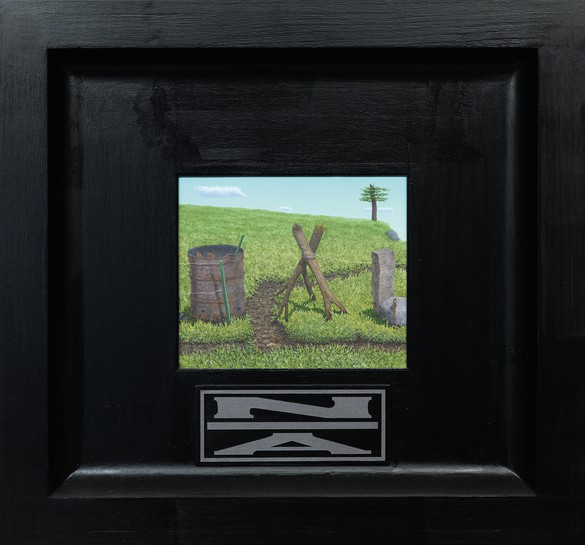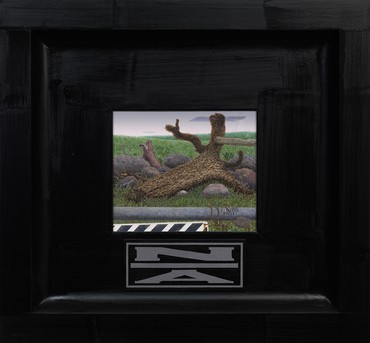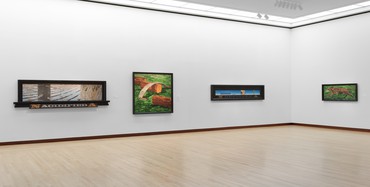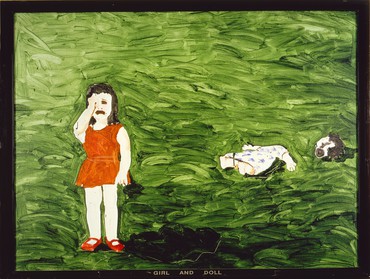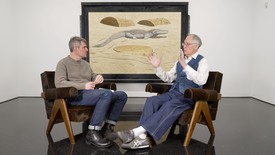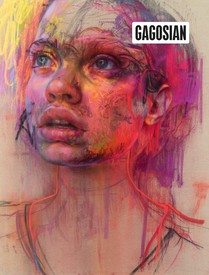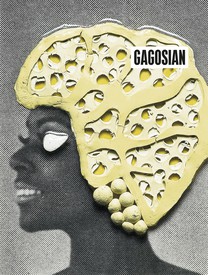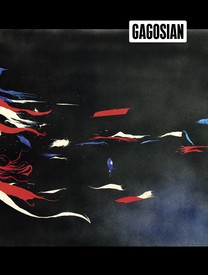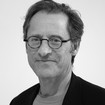
Douglas Dreishpoon, chief curator emeritus at the Albright-Knox Art Gallery, Buffalo, New York, is currently director of the catalogue raisonné project at the Helen Frankenthaler Foundation, New York, and consulting editor at The Brooklyn Rail. His book What Is Modern Sculpture?, part of the Documents of Twentieth-Century Art series, is forthcoming from the University of California Press.
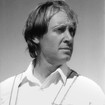
A maverick of twentieth-century American art, Neil Jenney pursues realism as both a style and a philosophy. He strives to return to the classical ideal of truth and to integrate form and content, while eschewing what he has described as the decorative, expressive qualities of modern abstraction. Photo: Debra Jenney
Douglas Dreishpoon Neil, you’ve created a list of axioms or rules for how to live life. One that really stood out: Art is a game in which one must discover one’s own rules. You’ve followed that maxim consistently, creating your own rules, haven’t you?
Neil Jenney That’s right. When you develop a philosophy of life, you have to find out what’s right and what’s wrong for you. That’s also true in terms of aesthetic taste: it takes a while before you know who you are, you have to confront it and think about it. A good way to approach that whole thing is to learn what’s not right for you. You can have a visceral response and know, yes, that’s not right for me.
DD You were born in Torrington, Connecticut, right?
NJ Yes, in November of 1945. In 1950 we moved to Westfield, Massachusetts. My father worked in a needle factory and they transferred him. He worked at the factory for, I think, thirty-eight years. I grew up across the road from a chicken farm, which to me was the most interesting place in the world. There weren’t other boys my age where I was, so I spent a lot of time alone or with the two adults who would tolerate my presence.
DD Given where you were raised, the grounding in nature that’s clear in your work is something that comes naturally, then?
NJ Yes, I was raised country. I worked on farms throughout my formative years.
DD When you decided that you wanted to go to art school, was it tolerated in that rural environment?
NJ Oh yes. I graduated in 1964. At that time you either went to college or you went to the Vietnam jungle. I was lucky, I was able to get into the Massachusetts College of Art [Mass Art] in Boston. The artist Truman Egleston was teaching at Boston State College at the time—
DD You were already familiar with his work, right?
NJ Well, his parents lived just a few doors away from me. He had gone away to the Korean War and then went to Mass Art on the GI Bill. After that, he went to the California College of the Arts and Crafts, in Oakland, and studied with Peter Voulkos, because he was doing ceramics at the time. I knew his art because his next-door neighbor, Jim Drummond, who became a close friend of mine, had a lot of his paintings. I got to see these works in in the summer of 1955. It was the first time I’d seen Abstract Expressionism.
DD What was your first response?
NJ I didn’t have a negative reaction but I didn’t understand what was going on. I was open-minded, you know.
DD His paintings at that time were highly gestural?
NJ Yes, he was essentially making Action paintings at the time. He eventually moved toward more formalized, hard-edged paintings, and again, his hard-edged work was the first of that technique I ever encountered. He was really in step with the times: if he’d been in Washington, DC, he would have fit right in with Kenneth Noland and Morris Louis, but being in Boston is like being nowhere. He never got to New York because he had a teaching position and that was considered very elite and secure.
DD At a certain point you decided that you wanted to relocate to New York. Was that decision motivated by the situation in Vietnam?
NJ I loved making art, but the rest of school was ho-hum. I’d slide through with like a D average—I’d already figured out how I could get through all these semesters, though barely. In 1963, with the death of [John F.] Kennedy and all the saber-rattling, suddenly they were talking about the draft and I got totally freaked out. The whole thing was totally fabricated and scary. The Vietnamese had done nothing to us. We hated Hitler, but what, were we going to hate Ho Chi Minh?
So I went to Boston and I visited Egleston and I said, “How do I get into Mass Art?” “Oh,” he says, “just have lots of stuff. Just keep dragging it out. They love that.” That’s the best advice you could ever give an artist, “Make a lot of art.” So I came home, set up my studio in my cellar, and I started making art as fast as I could. I showed up at Mass Art and everybody else had a portfolio and I walked in with just as much as I could carry. Egleston was right: they all gathered around and sure enough, I got into Mass Art.
DD A relief.
NJ But I didn’t have any money. I figured I’d work my way through school, but it turned out that Boston was flooded with students every fall and every part-time job was already taken by somebody going to Harvard or Boston College or Simmons or BU. So my thinking was, I’ll make art and maybe get a show on Newbury Street. So I went to Egleston’s and he introduced me to his dealer, Harry Nasse, who said no. He gave me my first rejection. Everybody in Boston rejected me.
DD But in 1966, you got yourself to New York. The scene proved to be a melting pot of any number of possibilities for you. What I find really interesting is the sculptural impulse you seized on so quickly. Your early work often uses light, and light continues to appear throughout your career; looking at even your newest paintings, they have a quality of light that’s unique. One could say that that interest in light really begins in a sculptural form. What, at that point, did sculpture mean to you?
NJ What happened was, I started as an Abstract Expressionist painter. I’d done a few things with shape paintings, which I’d mount onto other surfaces—I was building stuff. I was a whittler when I was small, and I made bows and arrows and all kinds of stuff. I was always like that, building stuff, like my father.
DD So when you got to New York, you initially sculpted, but then you turned your energies to painting. Eventually you realized that paintings needed frames, and then you were back in the sculpture business, right?
NJ Yes, which is where I wanted to be. That’s why I do painted sculpture now. It’s really what the whole package is.
DD The frames are very interesting: some have wide portals, and are relatively simple, while others seem weighty, heavy, and almost claustrophobic. I had an emotional response to some of the weightier frames, almost a death response—if there was a soundtrack, I felt, it would be a requiem. Is there any credibility to that?
NJ A lot of people have that funeral reaction. I can see their point, but what I realized was that the darker frame let your eye feel the color. It presented the color in the painting more crisply; it was more of a quiet zone, less active. It just seemed to be restful somehow, and it let the colors live. I really wasn’t concerned about the whole life-and-death issue. Once I learned about the ancient Greeks’ system of understanding painting—that you’re looking through a window onto the scene, and that the frame is basically the architectural foreground, the window presenting the illusion—I couldn’t stop drawing frames. I’m still doing it.
DD Does the content of a particular piece warrant a certain kind of frame in your mind?
NJ Yes.
DD How do you make the match? Is it empirical, intuitive—
NJ Well, I do the frames before the paintings. I learned that lesson. I made a shaped painting called The Window Series and after building the frame, I just hated it. That’s when I realized that I had to make the sculpture first. They built the cathedral before they did the frescoes.
DD That’s a good point. The word “realism” comes up time and time again in speaking about your work. There are so many possibilities of interpreting that word; you’re not advocating for a photorealism, to be sure, nor is it the magic realism of Peter Blume and Paul Cadmus—
NJ No, those are the wild people.
DD Right. So what are we to understand by the word “realism” in relation to your work?
NJ I’m governed by nature. Anything I do, I want it to feel natural, but I’m dedicated to line. Photographs you can’t use, you have to develop your own linear formations and boundaries. Total unified harmony achieved totally intuitively. I don’t want to be repetitive; I want to search for something exciting. My paintings entitled North America Divided capture my persona. That’s really me, as such. I can’t say I’ve actually witnessed what’s in those paintings, but I’ve been there and I know those things. I’m really committed to witnessing what I do. I go and look at the rocks. I draw in the field. I mix in the field.
DD But you come back and paint in the studio. There’s a process of transposition: what you see on-site might change when you get back into the studio. Or are you trying to replicate more directly somehow?
NJ You’re always interpreting, because you’re affected by your emotional reactions to whatever the imagery is. But you want to witness what you’re depicting. If you draw it, you’ll understand it. I try to have in my memory what I’m trying to achieve. I can close my eyes and see what I want.
DD Let’s talk about the terms “Bad Painting,” “Good Painting,” and “Slow Painting,” these adages that have come up in your trajectory. It was probably Marcia Tucker who got this started, right, with the Bad Painting show she organized in 1978.
NJ She came up with the term, yes.
DD And you seized on that; suddenly you yourself are using terms like “Bad Painting,” “Good Drawing,” “Bad Drawing,” “Good Painting,” and then, when you get into oil, “Slow Painting.” What makes the distinctions?
NJ For one, it depends on the materials you use. When I did those early, green “Bad Paintings,” I used acrylics, which dry fast. You can’t paint slowly with them because they dry, and then you get dried strokes over dried strokes. But you want to make it look like it’s done once so it’ll be fresh. That was the essence of that whole period of “Bad Painting.” I kept telling everybody it was “new realism.” I was pointing out that it wasn’t Pop art, that was my whole spiel. I’m not using American symbolism, I’m using an international vocabulary. A little crying girl and a broken doll—any culture could understand it. So that was the separation I had. But when Marcia came up and said “Bad Painting,” I said, “You’re talking my language.”
DD So you agreed to partake in her exhibition?
NJ Oh, absolutely. Aside from the material aspect, “Bad Painting” isn’t trying to be good. It’s not even trying. It’s about getting the message transmitted rather than the method of depiction.
DD The method of a “Bad Painting” seems gestural, brash, and rather interesting in the end.
NJ Well, the fact that they’re done so fast gives them a freshness. The old-timers used to want to see brushwork with snap, like Frans Hals.
DD Or Franz Kline.
NJ Kline, right. I had a painting called Accident and Argument [1969]—it showed these guys who had just driven their vehicles into each other, and they were by the side of the road, arguing with each other. When I got that idea, I’d just draw it as fast as I could and paint it as fast as I could. Done. As long as you understand it’s Accident and Argument, that’s the whole thing, and whatever it looks like is good enough for me. It’s getting the point across. It’s about relationships, which is really the structure of realism—content and narrative and all those other elements play into the development of relationships. I realized I was dealing with something very separate from the whole Pop thing, which was the realism of the ’60s.
DD Would you say that your works are optimistic?
NJ Yes. I believe that you have to make a positive statement if you’re an artist.
DD Why? Some artists might not agree with that.
NJ Masochists [laughter]. There are all kinds of people.
DD I was just thinking that artists, as voices of conscience—
NJ Certainly.
DD —may not have an entirely optimistic point of view.
NJ Well, I’m a voice for my conscience. I’ll admit to that. I can’t speak for other people. But I don’t try to do frivolous art. I’m trying to do something that has some significance, if possible. I’m trying to achieve a level of beauty. Naïveté has purity, but you can also have purity in refined sophistication.
Artwork © Neil Jenney; photos: Rob McKeever
